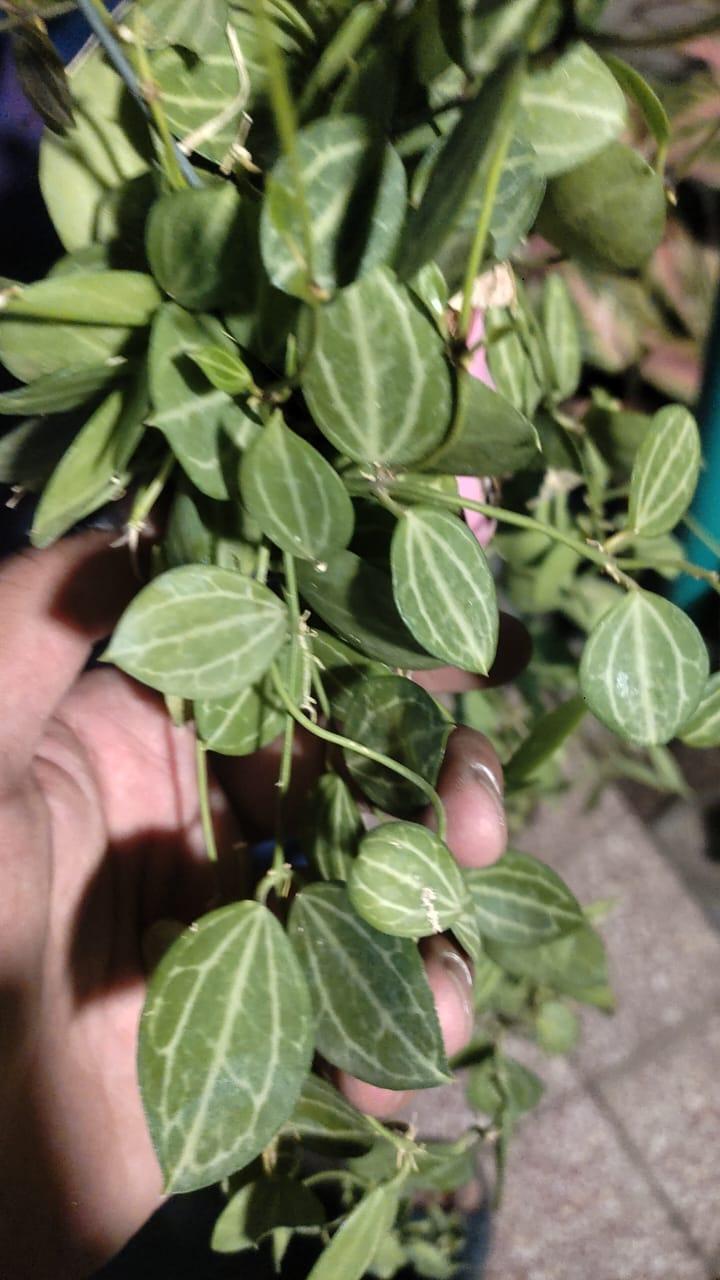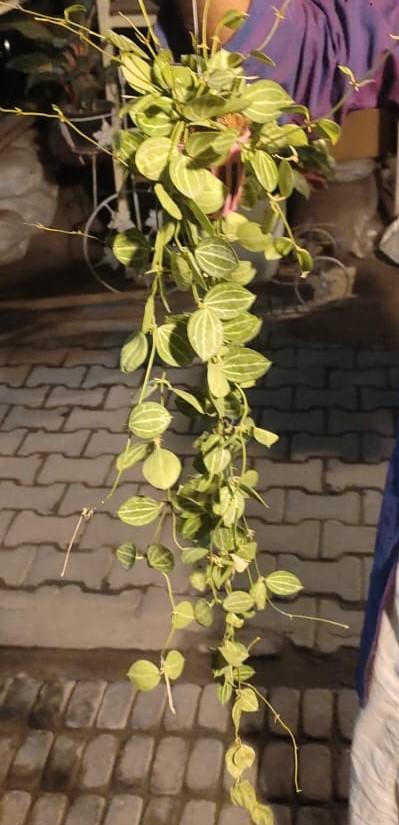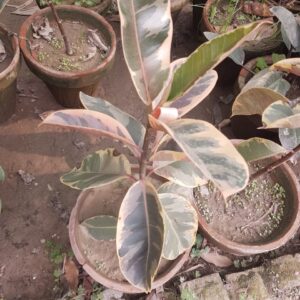Watermelon Dischidia: A Complete Guide to Growing and Caring for This Unique Plant
Watermelon Dischidia (Dischidia ovata), also known as Hoya Watermelon or Wine Watermelon, is a fascinating epiphytic plant belonging to the Apocynaceae family. Native to the tropical rainforests of Southeast Asia, the plant is highly sought after by plant enthusiasts and gardeners for its striking foliage and easy care. Its bright green leaves, decorated with silver veins reminiscent of watermelon rind, add exotic beauty to any indoor or outdoor garden. In this comprehensive guide, we cover everything you need to know about watermelon discidia, from its origin and characteristics to care, propagation and common problems.
Origin and Characteristics
Watermelon dischidia is native to the humid rainforests of the Philippines, Malaysia and Indonesia. As an epiphytic plant, it naturally grows on trees and uses them for support, absorbing moisture and nutrients from the air and rain. Thanks to this unique growth habit, it is suitable for growing in hanging baskets, attached leaflets or as part of a terrarium.
One of the most striking features of the Dischidia watermelon is its leaves. The leaves are small, oval and fleshy, usually 1 to 2 inches long. The foliage is light green with distinctive silver stripes that mimic the pattern of a watermelon rind and give the plant its common name. The plant produces small, inconspicuous flowers that are usually pale yellow or white, but its real charm lies in the leaves.
Ideal Growing Conditions
Light: Watermelon Dischidia thrives in bright, indirect light. It tolerates direct sunlight, especially in the morning or late afternoon, but too much direct sunlight can burn its delicate leaves. If it grows indoors, placing it near a window facing north or east is ideal.
Temperature: This tropical plant prefers warm temperatures between 15°C and 27°C. It is sensitive to cold drafts and should be kept away from windows or doors that are opened frequently during the cold months.
Humidity: Because Dischidia watermelon is native to humid rainforests, it thrives in environments with high humidity. Try to keep humidity between 50% and 70%. If the air in your home is dry, consider using a moist substrate, misting the plant regularly or using a humidifier.
Soil: Since Watermelon Dischidia is an epiphyte, it does not require a traditional potting soil. Instead, use a well-draining, airy mix such as orchid bark, sphagnum moss or a combination of perlite and peat moss. This allows proper air circulation around the roots and prevents them from getting wet.
Watering: Dischidia watermelon prefers to be constantly wet but not waterlogged. Water the plant thoroughly when the top inch of growing medium feels dry to the touch. Reduce the frequency of watering during the winter months when plant growth slows down.
Propagation
Watermelon Dischidia propagation is relatively easy and can be done by stem cuttings. Follow as follows.
Choose an intact stem: Choose an intact stem with multiple leaves and at least one node (where the leaves join the stem).
Cut the trunk: Make a clean cut just below the node with clean, sharp scissors or clippers.
Prepare the slices: Remove the bottom leaves from the slice, leaving at least one or two leaves at the top.
Plant the cuttings: Place the cuttings in a small pot filled with a moist, well-draining growing medium such as Sphagnum moss or perlite.
Provide humidity: place the pot in a warm, humid environment and cover it with a plastic bag or clear plastic container to create a mini-greenhouse.
Wait for roots to develop: Within a few weeks, the cutting should develop roots. Once the roots are established, you can move the new plant to a larger pot.
Common problems and solutions
Yellowing of leaves: This can be a sign of overwatering or poor drainage. Make sure the plant is in a well-draining environment and adjust your watering accordingly.
Leaf drop: Sudden leaf drop can be caused by temperature fluctuations or currents. Keep the plant in a stable environment with a constant temperature.
Pests: Watermelon dischidia can sometimes be damaged by pests such as mealy bugs, spider mites and aphids. Inspect the plant regularly and treat infestations immediately with an insecticide or neem oil.
Lack of growth: If your watermelon dischidia is not growing well, it may not be getting enough light. Move it to a brighter location with indirect sunlight.
Conclusion
Watermelon Dischidia is a delightful and visually striking plant that can add tropical style to any room. Thanks to its unique foliage and relatively easy care, it is an excellent choice for both the beginner and the experienced plant lover. With the right conditions and regular care, you can enjoy the beauty of Watermelon dischidia for years to come. Whether in a hanging basket, attached to driftwood, or part of a lush terrarium, this plant is sure to become a favorite in your collection.
Checkout our variety of low light indoor plants here : https://boota.pk/best-low-light-indoor-plants/
To learn more about your favourite plants, check our YouTube channel : https://www.youtube.com/@boota4474






Reviews
There are no reviews yet.